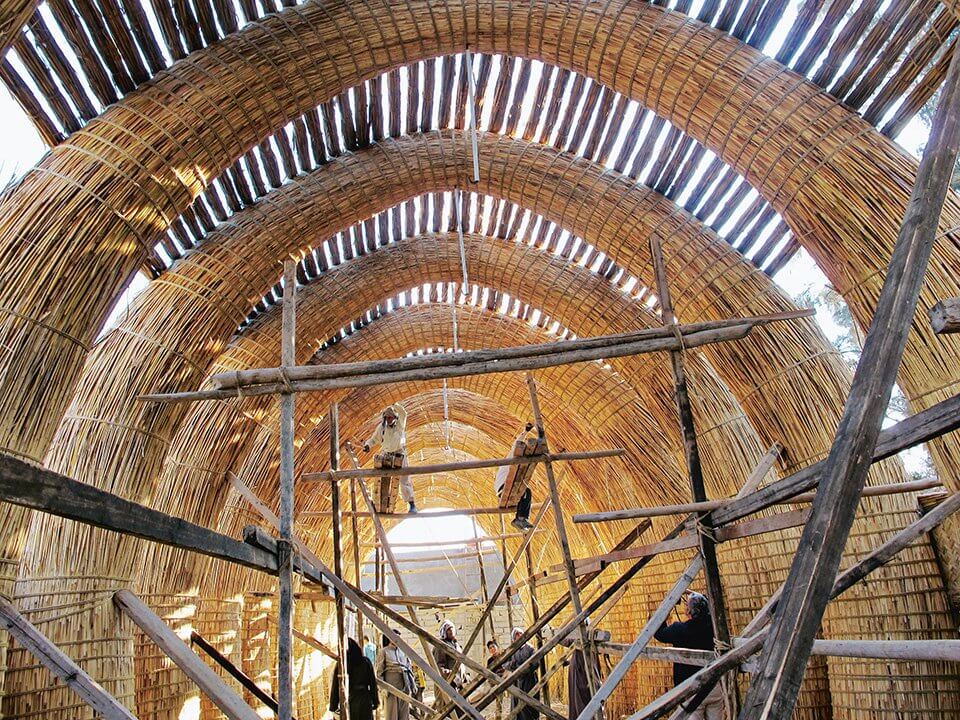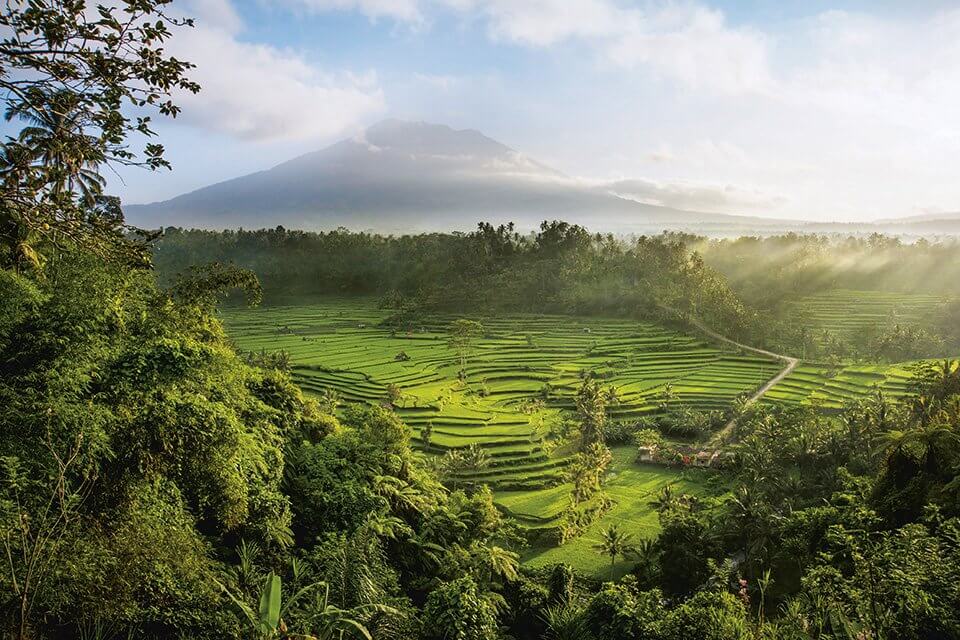Lo-TEK: Design by Radical Indigenism presents indigenous design, unpacking thousands-of-year-old technologies, while revealing how modern design can use and learn from it today.
Written by climate-resilient designer, academic and author, Julia Watson, the book is published by Taschen, who elevate the book with signature glossy pages but posed within a ‘raw’ cardboard sleeve. The physicality of Lo-TEK initiates framing within an unassuming, yet beautiful catalogue.

India. In the relentless damp of Meghalaya’s jungles the Khasi people have
used the trainable roots of rubber trees to grow Jingkieng Dieng Jri living root
bridges over rivers for centuries.
Copyright: © Amos Chapple
Approaching design with ‘rewilding’ in mind, Watson draws from her portfolio of sustainable design. For example, her assistance with the Reef Resilience initiative with the Great Barrier Reef Foundation and her work in conserving Bali’s first UNESCO World Heritage Site. Fittingly, the book, and Taschen as a company, are carbon neutral — amplifying the philosophies of the guide. And it begins with a dedication to the next seven generations, as Watson begins the link between Radical Indigenism and sustainable design.
Watson defines the term ‘Lo-TEK’ as “a design movement to rebuild an understanding of indigenous philosophy and vernacular architecture that generates sustainable climate-resilient infrastructures.” The book goes on to unpack each element of her hypothesis and how her examples bind the concepts of ‘TEK’: Traditional Ecological Knowledge.

mudhif, which is built entirely of qasab reed without using mortar or nails,
can be taken down and re-erected in a day.
Copyright: © Jassim Alasadi
In her introduction, ‘A Mythology of Technology,’ Watson weighs the price of enlightenment and industrialisation, posing that we are “drowning in information while starving for wisdom” and, as such, “the legacy of this mythology haunts us.” Watson doesn’t assume the lexicon of her audience, highlighting keywords and explaining their meaning. This process decolonises language and design, offering new contexts to understanding her theories.
The crux of the book explains how design has immersed itself in the epoch of the Anthropocene, resulting in 60% of the world’s biodiversity vanishing over the last 40 years. However, Lo-TEK reveals how indigenous culture works with nature, and perhaps the only way to preserve the natural world.

isolated on Lake Titicaca on floating islands, now survives dependent upon
tourism. Copyright: © Enrique Castro-Mendivil
Subdivided into four different ecosystems, Lo-TEK looks at design by radical indigenism in extreme conditions such as mountains, forests, deserts, and wetlands. From the Warra Way Agricultural Terraces of the Inca, Peru to the Sawah Tambak Rice-Fish Aquaculture of the Javanese, Indonesia. The Apete Forest Islands of Kayapo, Brazil to the Waffle Gardens of the Zuni, New Mexico.
Watson goes on to present each case with the science between methodology and indigenous design approaches. Every example opens with location, people, technology, elevation, origin, and continues with picturesque images, both in wide-angle and cropped to present specific viewpoints, and detailed illustrated graphs. Accompanying the cases occasionally are interviews with a philosopher or designer.

thousand year old agrarian system known as the subak, which is unique to
the island of Bali, Indonesia. Copyright: © David Lazar
The book suggests there is a way to imagine the relationship between place and the human connection anew — “a new architecture of the heart” as Wade Davis writes in his foreword for Lo-TEK, ‘A Reverence for Place.’ Sustainable design becomes systematic de-approach, the very opposite of the Western design world’s approach to greenwashing. We are constantly reminded throughout Lo-TEK, do we want to live in a human-made jungle and lose the essence of nature? Or do we what to work with it, and prevent natural disasters from destroying these precious ecosystems for the next seven generations?